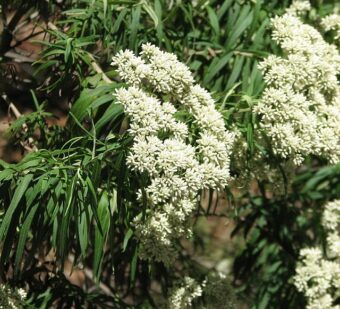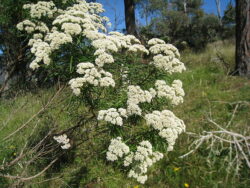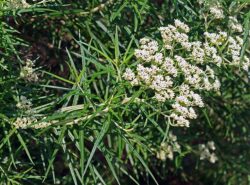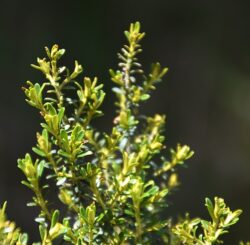In this article, we will discover how to grow the flowering plant of Cassinia in containers. Cassinia is a genus of flowering shrub that belongs to the Asteraceae (the Aster or Sunflower) family, where 52 species are known to exist.
It is a native and found all over Australia and New Zealand. It is mainly grown for the leaves and not the uninteresting flowers that are produced in summer. The genus is named after French botanist Count Alexandre Henri Gabriel de Cassini. If you have a liking for acid-loving plants and are in the market for an alternative to heather then this is the plant for you.

The evergreen leaves may be yellow, green or white depending on what variety is grown. The leaves are arranged alternatively, where the edges are either flat or strongly rolled underneath. The flowers are white to cream coloured, yellow or pink, arranged in heads. The heads are cylindrical, flat or bell-shaped corymb. The blooms are often surrounded by several rows of boat-shaped, erect bracts.
The shrubs tend to have sticky leaves at the start of the growing season. The main species is Cassinia fulvida (C. leptophylla subspecies fulvida) which has 1.25cm leaves that are pale yellow in spring. As the season progresses the leaves darken and in autumn they become a dull orange. The flowers appear on the top of upright stems, making them an ideal species to grow in containers.
Find out how to grow this shrub of Cassinia in containers.
CASSINIA IN CONTAINERS
First, choose a container that has plenty of drainage holes and is well balanced with the plant in question. Fill the container with a 2cm layer of gravel to aid drainage further and on top of this add to 5cm below the rim with ericaceous compost.

Dig a hole that is slightly larger than the root ball it came in the original container. Drop the plant in so that the top of the root ball is at the same level as the top surface of the compost. Backfill with the growing media so that no visible gaps remain, using more compost if necessary. Firm the plant in and water well with rainwater to settle the roots.
THE BEST GROWING CONDITIONS
This is one shrub that appreciated the sun, where it will be at its best in terms of leaf colour and flower production.

They will take drought pretty well once it has been established but before that, you will need to water with rainwater frequently. It is advised to water when 5cm below the top surface feels dry to the touch, Water with rainwater until it emerges from the drainage holes.
Like all heather-type plants, they are not particularly hungry plants but you can give an initial boost by feeding with a slow-release ericaceous fertilizer in spring. Pruning is not necessary but you can remove any winter damage, straggly shoots and old stems in March.
To propagate you can plant semi-ripe cuttings in a cold frame in summer for planting next year once the plant has rooted and established.
PESTS AND DISEASES
The good news is that the plant does not readily suffer from pests or diseases, which is great for those who suffer from losses for other plants that succumb to pests and diseases.
VARIETIES TO GROW
The main variety is Cassinia fulvida which has been described in the introduction.
Other species you can find include:
Cassinia vauvilliersii has dark green leaves but it is a dull plant. ‘Albida’ is a better plant as it has a mealy white coating over the stems and leaves.

Cassinia longifolia has broad and long leaves, noticeably showy and sticky to the touch when young. The undersides are covered with short dense hairs and each leaf has a vein along the middle.
Cassinia aculeata has short, narrow leaves of three that are curled over the edges. The new flowers are sometimes pink rather than white, giving an extra dimension.
Cassinia trinerva has longer and broader leaves than C. aculeata but they are not as soft and not as showy. They have big veins running down the middle of the leaf and two smaller veins running inside the leaf margins.
Cassinia leptophylla is similar to C. fulvida with a slight difference. It produces funnels of white flowers in late June or July.
CONCLUSIONS
In this article, we have discussed how to grow the pretty shrub of Cassinia in containers. They are grown more for the leaves but the flowers are attractive as well. You have plenty of choices as many species are on offer. If you want a plant that is in the heather family and is easy to care for, easy to look after and resistant to pests and diseases then this is the shrub for you.
If you have any questions or comments that you wish to make about growing Cassinia in containers, please do so in the comment box below.
Happy Cassinia growing
